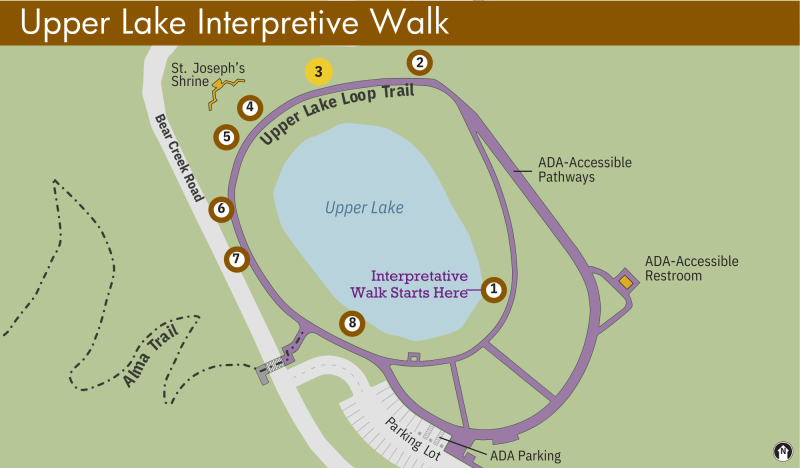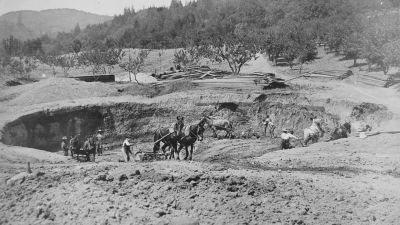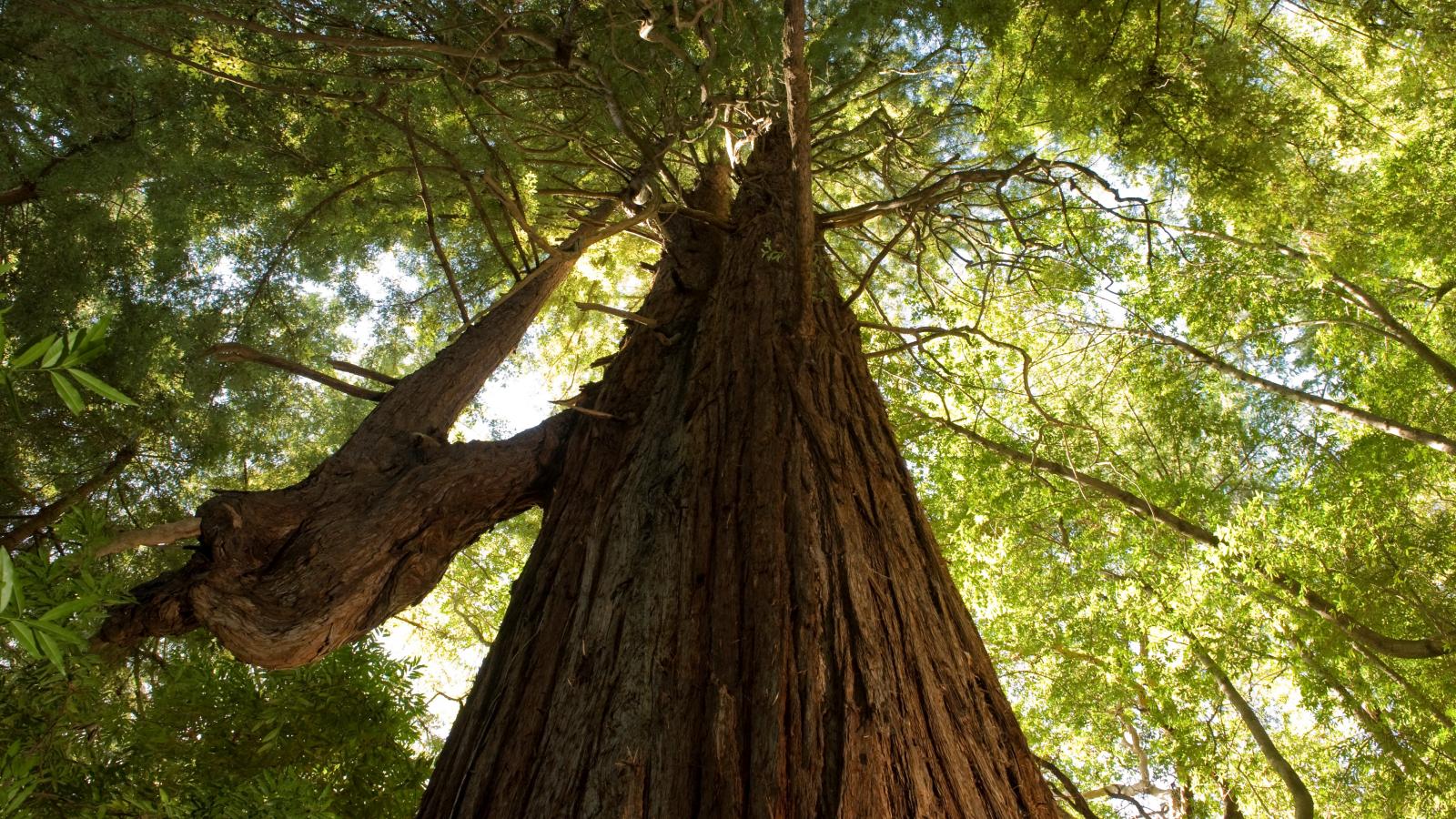
The slopes of the Santa Cruz Mountains were once covered with old-growth redwood forests with trees several hundred years old, and commonly more than 200 feet tall and 10 feet across. Between 1850 and 1900, the rapid growth of San Francisco and San Jose fueled a high demand for lumber, and most of the old-growth trees in the region were felled. One large redwood could provide enough wood to build 20 houses.

People began heavily altering this site’s natural water systems in the 1850s to feed the lumber demand. The first sawmill in what is now Bear Creek Redwoods was built around 1850 by a man named Webb. Webb operated his mill long enough for the creek nearby to become known as Webb Creek.
Then he sold his mill to James Howe, who dammed Webb Creek and expanded the sag pond on the ridge into a reservoir. This reservoir (now called Upper Lake) provided power to Howe’s mill saw using a water wheel.

Later, estate owner Dr. Harry L. Tevis made Upper Lake deeper and rounder, and constructed cisterns, dams and pipes to store 11 million gallons of water to keep his gardens lush. Tevis also built water features for enjoyment; his estate boasted a massive aqueduct with an artificial waterfall, a swimming pool in stately Roman style and a lily pond for quiet reflection.

